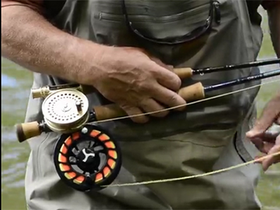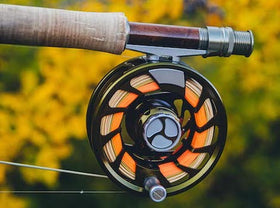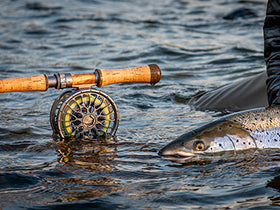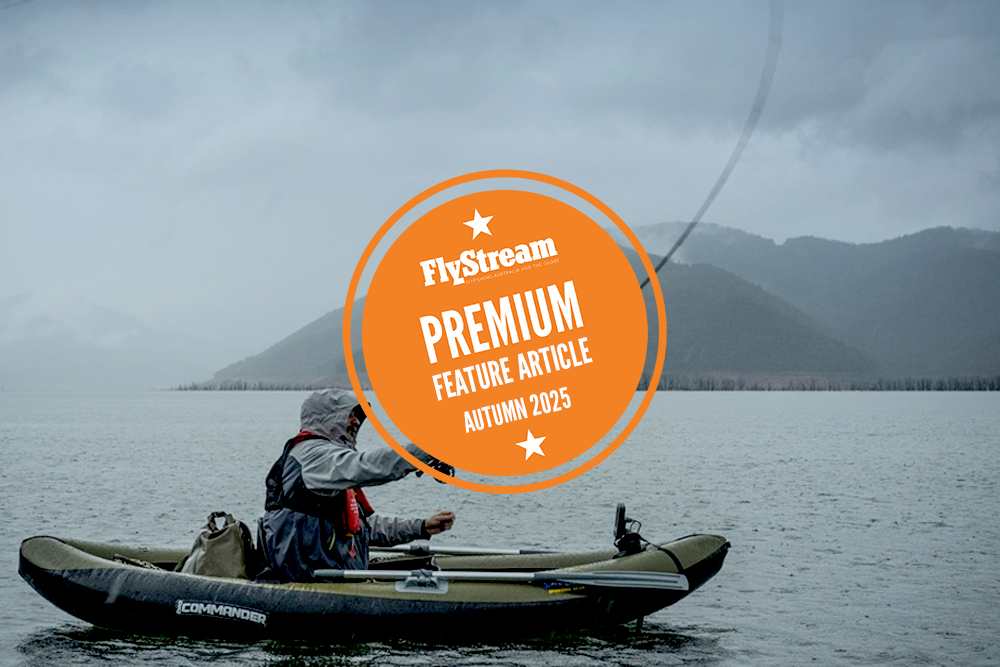
With the first cold days reminding us of what's just around the corner, David considers what to wear flyfishing during the cooler months.
The winters where I grew up, near Chicago, were brutal, with nothing but flat fields and corn stubble to slow down the roaring worst the Arctic would throw at us in January and February. The coldest day I remember from that time was during a 4 hour return trip to O’Hare Airport to pick up a friend. While the ambient temperature was a fairly standard -25F, high winds off Lake Michigan saw the wind chill factor at -60F.
Now, before you give me any crap about metric vs imperial conversions, go ahead and think about -51C and potential death if you were caught out in it for very long. I mention this, not to brag about being stupid enough to live in an environment that really should only include Eskimos or mad Canadians, but to give context to my lifelong fear of being caught out in the cold.
Fortunately, in Canberra where I live now, and at the places I fish (at the times I fish them), any fear is really just being a sooky Boomer who doesn’t like getting cold.
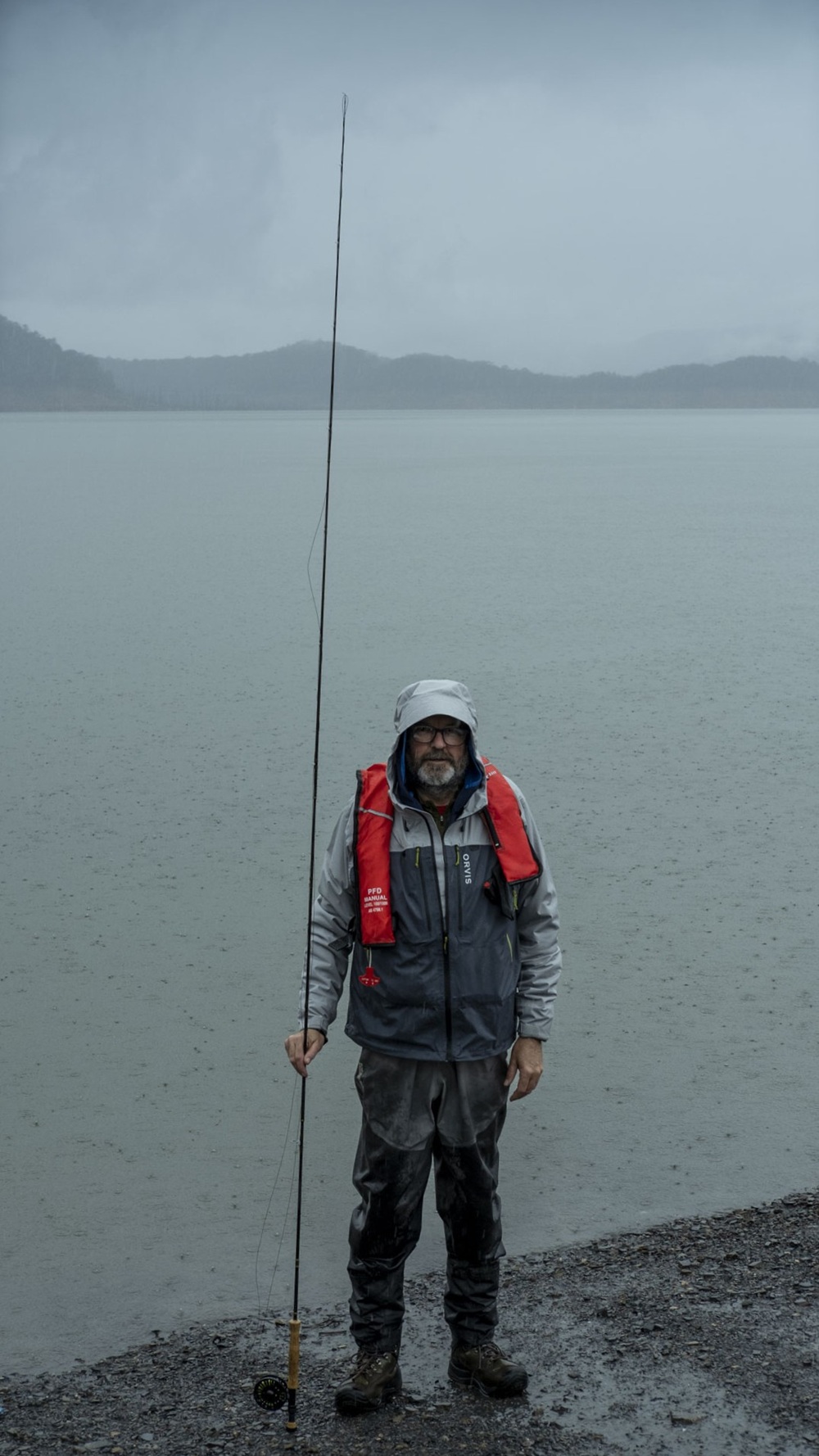 A bit sooky - but thankful for the Orvis Ultralight Jacket.
A bit sooky - but thankful for the Orvis Ultralight Jacket.Cold weather here in Australia, even in the mountains, is usually not a relentless all-day affair. So layers become very important and I break mine down into four parts:
- A wicking and breathable base layer to keep dry underneath – no matter what is worn over it,
- A shirt with appropriate pockets for my old age fascination with multiple pairs of eyeglasses,
- An insulation layer suitable for the temperature,
- And finally, a shell layer to keep out the wind and/ or rain.
If it’s nasty, I’m wearing all four. If the day ends up being fine and warm, just the base layer and shirt are usually enough.
Base layers and shirts
I’m down to a three breathable all-synthetic options here, which are either tight-fitting short or long-sleeved tops that sit well under a button-down shirt, or a collared 1/4 zip which adds a little more neck protection.
Everyone makes this stuff, and in a huge range of prices. However, I highly recommend Patagonia because, in my experience, it lasts. That said, I have a couple of undershirts from Bonds that were cheap and do the job very well, and also some T-shirts from Nike that make me look like I’m trying harder at the gym.
As with base layers, with shirts, there’s really too many options to list here. Mostly, I just wear the same light shirts from Orvis, Simms and Patagonia I use in summer, worn over a base layer. If it’s going to be really cold though, I’ll go a bit heavier and wear my Simms Cold Weather Shirts.
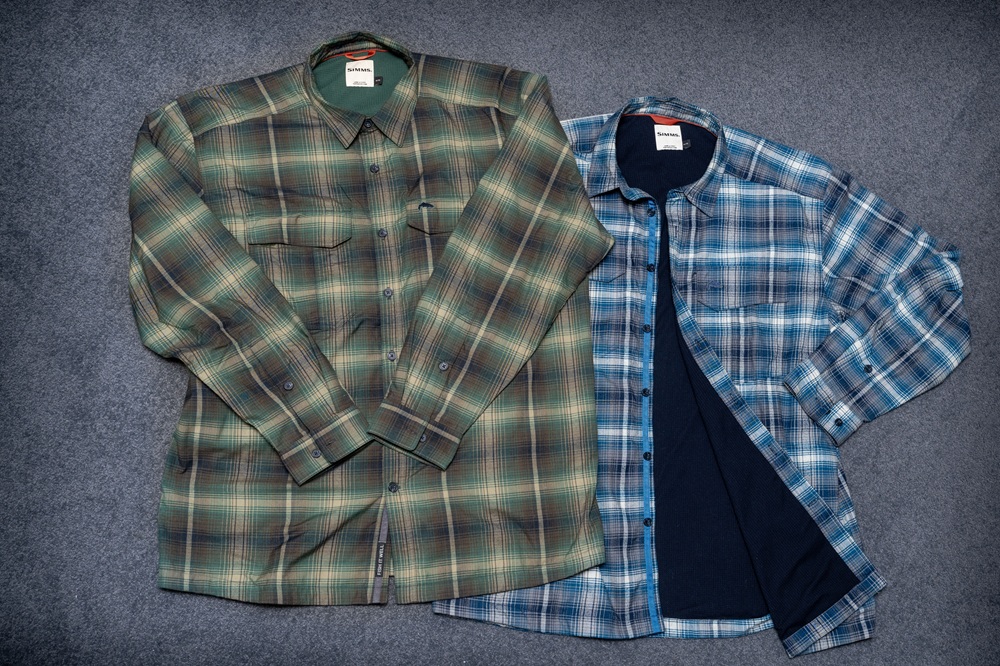 These Simms shirts are a good option when it gets properly chilly.
These Simms shirts are a good option when it gets properly chilly.These have an all-synthetic flannel exterior, with a warm, patterned microfleece lining. Also, they come in a casting-friendly cut, plus big flyfishing-friendly pockets. They’re also good-looking in a lumberjack sort of way that would fit in the worst icky-beer hipster bar imaginable!
Insulation layer
I’ll start here by saying that, like the BOM, I can’t predict the weather and being caught out by it really pisses me off. So, if there’s any chance of cold, I’ll have one of these layers with me. In fact, I always pack them when heading to the mountains, even in summer. Generally, for an insulation layer, I avoid fleece stuff because I find it binds up between a shirt and a jacket. I’m also not a huge fan – for fishing at least – of down because, while very warm, it quickly becomes useless when wet, and it doesn’t dry as fast as synthetic insulators. Down can also be a real pain to clean.
Even if you only consider the options from all the flyfishing-specific brands, there are a dizzying array of synthetic insulated jackets available out there, to cope with everything from an Antarctic blast, to a light chill on an otherwise fine day.
I have settled on two different versions of Simms Fall Run jacket (with its mid-range 60 gsm* PrimaLoft insulation): one with a hood and one without. The hooded version is always in my car wherever I go – work or fishing – and it has saved me a few times from a surprise summer cold front in the mountains, or a late night finish at work.
Having said that, the problem with hoods (and they seem to be on everything now) is if you have it up, you look like a wannabe gangster out to steal Commodores. Besides reducing the risk of arrest, the collared jacket alternative makes for a better fit under a shell jacket with its hood down. This is the jacket I wear more often, because I prefer the freedom and extra peripheral vision of a beanie if it’s that cold.
Then again, if it’s really cold, having the hood up on the Fall Run, in turn under the hood of my Orvis or Patagonia shell jacket – with a baseball cap to keep it all out of my eyes – is a bloody warm option.
For what it’s worth, I’ve bought these Fall Run jackets in large rather than my regular XL so they fit well under a shell.
Lastly, while these jackets pack down pretty tight, I also have a very light vest from L.L. Bean (because they do tall sizes in everything) with 60gsm PrimaLoft Gold insulation — this is the same voodoo as the much more readily available (in Australia) Patagonia Nano-Puff jackets and vests. Though it’s very thin, in fact hard to believe it could possibly work-thin, it absolutely does. I’ve even seen some tests with this insulation vs. down where it was 80% as effective. I’ll take that any day for the very light weight and extremely packable size.
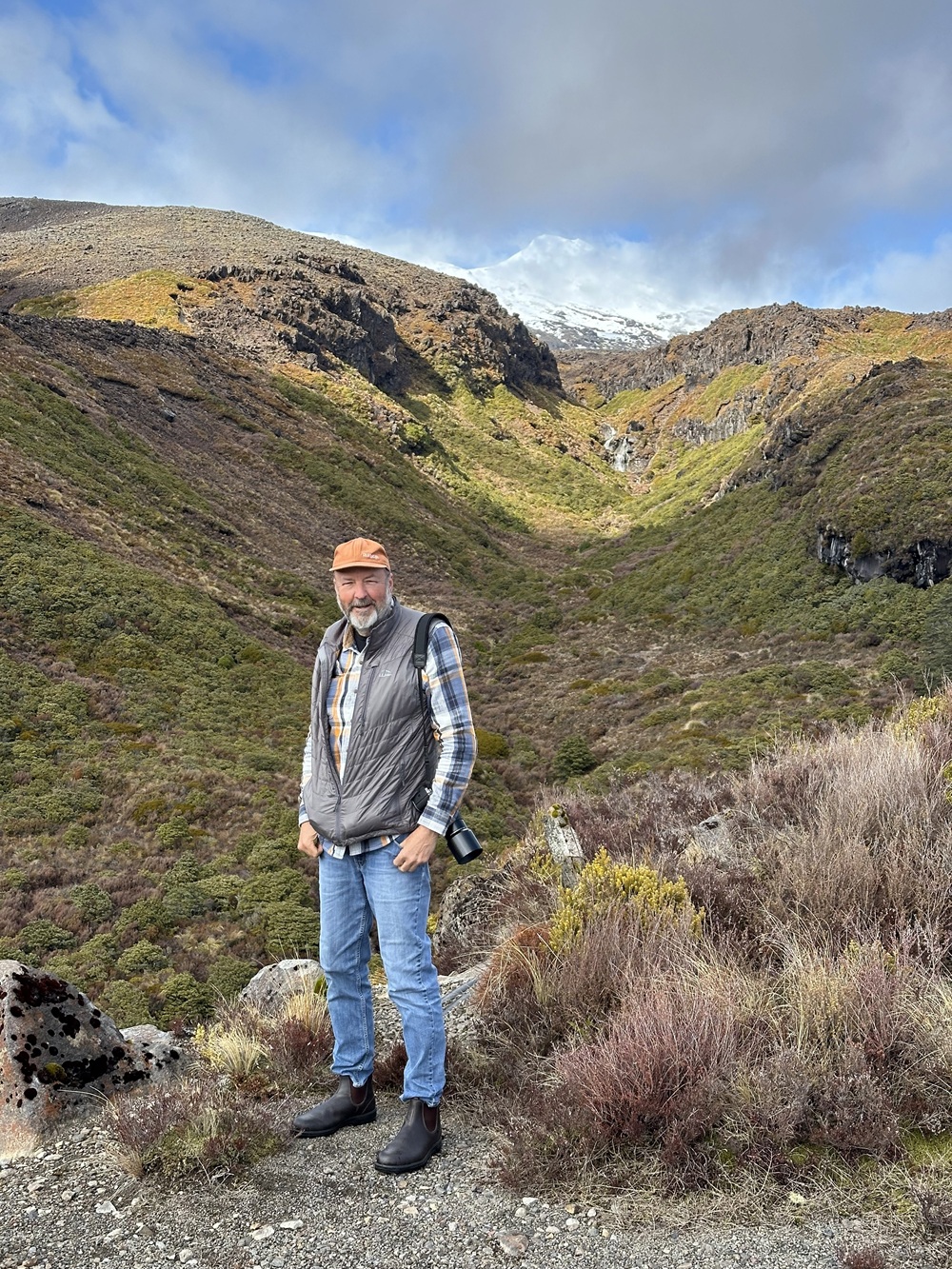 A decent vest is a surprisingly effective option for helping to stay warm.
A decent vest is a surprisingly effective option for helping to stay warm.This vest, over a base layer and a shirt, but under a shell has kept me going through some solidly cold early and late season mornings, despite the whole set-up being so light. And when I’m working, this vest is always in my camera bag.
Shells
Probably because I carry so much not-so-waterproof camera gear, I’ve never seen the point of having a shell that isn’t very waterproof – for either fishing or work. The best I’ve used, and one of the best fishing clothing things I’ve ever owned, is my Orvis Ultralight Wading Jacket. It’s earned the top spot by being a nicer thing to wear during an afternoon of summer rain than the heavier jackets. That’s thanks to its very light, very flexible and very breathable fabric shell. And, for early and late season cold, it’s cut roomy enough to add a layer or two underneath, yet it still packs down so small I can always have it in my already-crowded backpack.
I’ve had this out in tremendous downpours, including on a fishless winter day on Lake Dartmouth where it was both very cold and raining hard the whole time. At the end of the day, though suffering from some ego issues, I was still bone-dry underneath, and with the exception of my hands, never cold. At around $500, these are, in my opinion, good value as a one-stop waterproof fishing shell, though I would consider a heavier model like the Clearwater from Orvis, the Simms G3 or the Patagonia SST if I was wearing it all day and not worried about packing it.
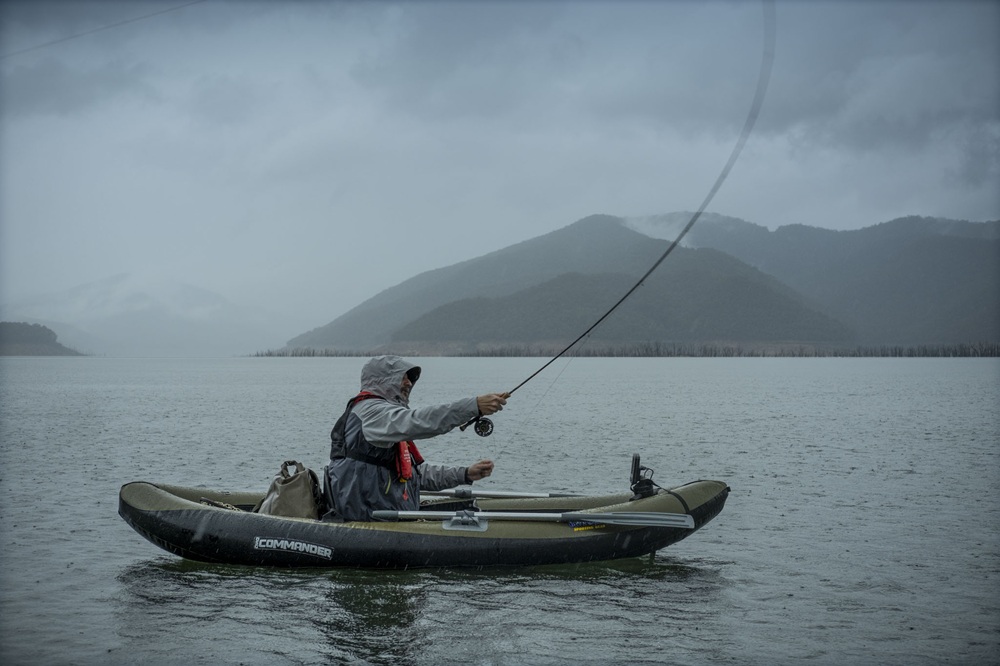 Staying dry in the Orvis Ultralight.
Staying dry in the Orvis Ultralight.My other shell, a Patagonia Granite Crest rain jacket is, like the Orvis very light, easily packed and perfect for added warmth – even if it’s not raining. While I didn’t buy it strictly for fishing, I do carry it when I’m not wearing waders because it’s longer than a wading length jacket and it’s always close by for work or a bushwalk. The pockets aren’t specifically set-up for fishing and it only has one chest pocket and two side pockets, all zippered, but it does have long pit zips that make it more breathable on a warm day. Like anything Patagonia, these don’t come cheap at a bit over $400, but everything I’ve had from the brand, over a long period of time, has always proved worth the spend.
When winter’s kiss turns into an orgy of cold
On a trip to Millbrook Lakes last winter as part of my tiger trout article, I discovered the real reason Victorians move from this otherwise beautiful state, to the over-humid, under-educated bogan paradise that is Queensland. It’s to escape the cold. I was there to photograph Bob ‘one fly guy’ Norris catching tiger trout. While the day started as simply cold and very windy, by 11am it was freezing cold, hurricane windy and sleeting sideways. By lunchtime, we unanimously decided hot chips and burgers were more important than trout.
Thankfully, knowing it might be cold, I brought along my then new and untested Simms Insulated Challenger Jacket and I am not writing this from Queensland. Really, this isn’t a jacket, but more of a proper coat in my mind, as it’s longer and warmer. It’s also cut big and while I usually get this Simms stuff in XL, I ended up with a large and there’s still room underneath for another layer – not that it would ever be needed. The exterior of the Challenger is 2-layer Toray nylon with a DWR coating and is absolutely waterproof, while the PrimaLoft Rise insulation is a heavy 133gsm in the body, 100gsm in the sleeves and collar, and 80gsm in the hood.
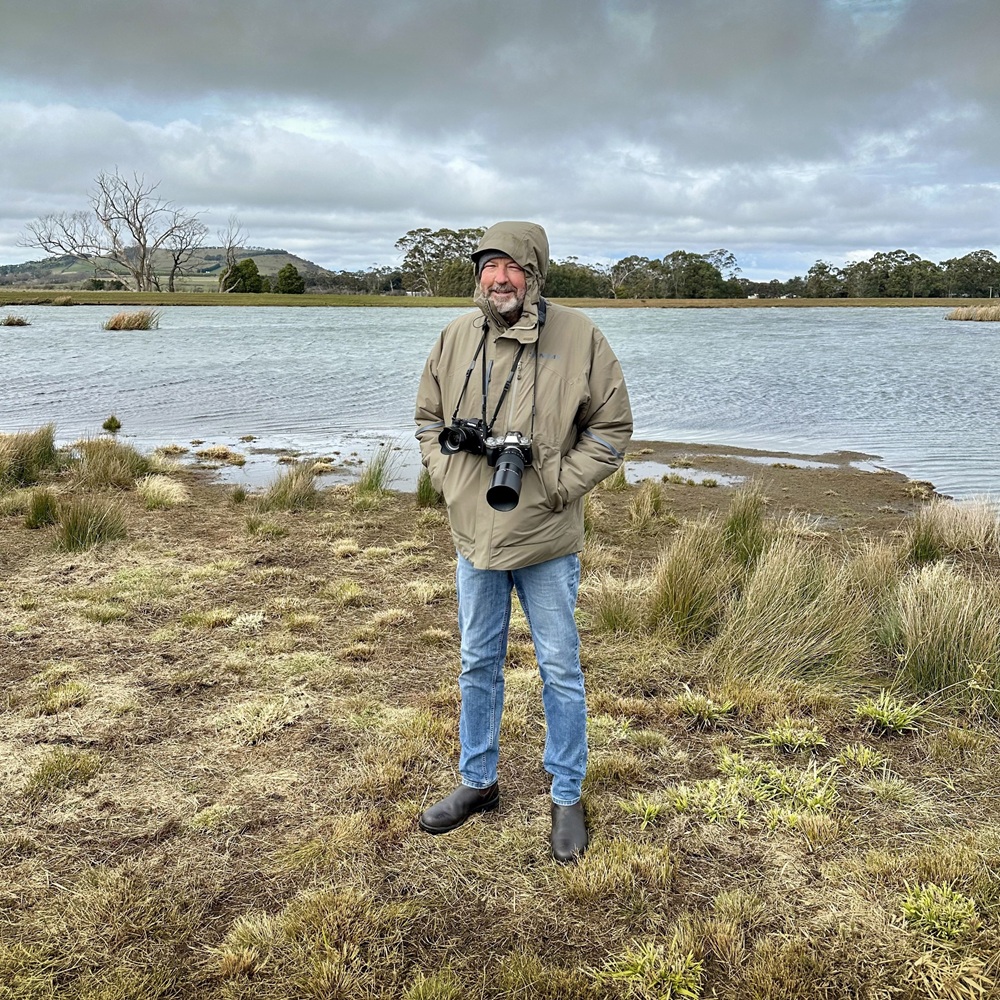 The Simms Challenger in its element.
The Simms Challenger in its element.In practice, this is like combining the best shell with the best insulation layer. Unlike my lighter jackets, the collar and hood are quite thick and, like the cuffs, rigid enough that, once fully locked down, you are ready for anything the weather can throw your way. Being a fishing jacket, there’s a full range of pockets, with two large, zippered ones on the chest, two even larger zippered handwarmer pockets at the sides, and two still larger mesh pockets inside. For extra security, there’s one more zippered pocket inside on the left as well.
Last, a very useful tethered cloth for cleaning glasses lives in the left chest pocket and would work well for the car keys. Being honest, I didn't buy this jacket for fishing as much as a worst-case scenario coat for snow trips or 4-wheel driving in the high country. But knowing it’s going to keep me warm and dry through the worst weather imaginable, on or off the water in Australia or New Zealand, helps justify the hefty price tag – even if it may be overkill for fishing.
Like all the gear I’ve mentioned in this article, there would be similar things available through non-fishing brands and probably for less money. However, being Simms or Orvis or Patagonia, the design, particularly in wading and insulated jackets, is properly suited to flyfishing, with a good cut for casting and all the right pockets.
My last bit of advice is, if you’re silly enough to go to Chicago in the dead of winter, just wear everything listed at the same time, and if people laugh at you, just say you’re from Queensland!
*gsm = grams per square metre.





